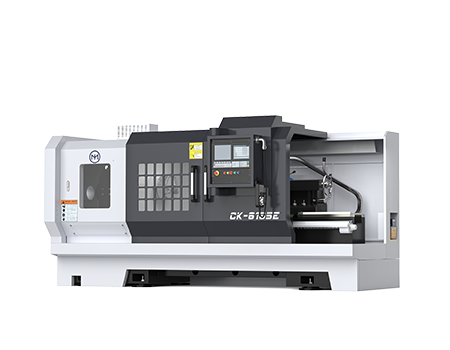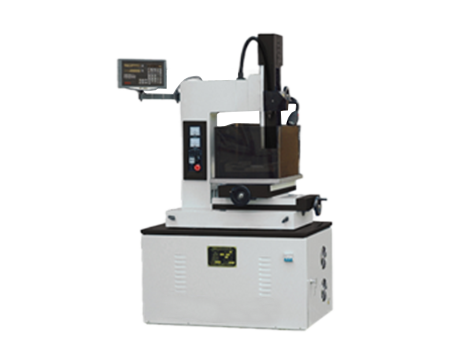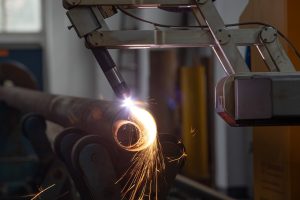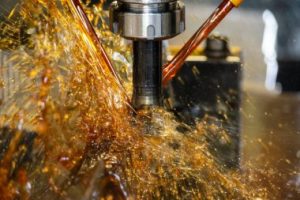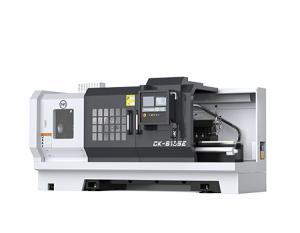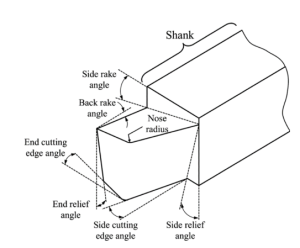With the rapid development of technology, precision machining plays an increasingly important role in various industries. Whether in aerospace, medical devices, or semiconductor manufacturing, the high precision and efficiency of precision machining technology have become key factors in production. In these fields, even the smallest deviation can lead to performance issues or safety risks. Therefore, precision machining is an indispensable technology for meeting strict quality requirements.
Precision machining is not just a simple production process. It relies on advanced technologies and equipment, combined with precise process control, to ensure that the quality and accuracy of every part meet the standards. During the precision machining process, every step, from design and equipment selection to material handling and later quality testing, is crucial.
This article will explore the basic concepts, methods, equipment, and applications of precision machining. It will help readers better understand how precision machining plays a vital role in modern industry.
What is precision machining?
Precision machining refers to the use of high-precision equipment and processes to manufacture parts that meet strict requirements by precisely controlling parameters such as dimensions, tolerances, and surface finish. This process usually involves high-precision CNC machines, ultra-precision instruments, and strict process control to ensure the final product’s dimensional accuracy, shape accuracy, and surface quality meet micron or even nanometer-level standards. Advanced manufacturing is widely used in high-tech fields such as aerospace, medical devices, and semiconductor manufacturing. It effectively meets the demand for high-precision and high-quality machining.
What are the steps in the precision machining process?
The precision machining process typically includes the following steps:
Design and Planning: First, engineers design the part based on customer requirements and create a detailed machining plan. They choose the appropriate machining methods and tools.
Selecting Equipment and Tools: Based on the material, complexity, and precision requirements of the part, suitable equipment is selected, such as CNC lathes, milling machines, or grinding machines, along with the corresponding precision tools.
Clamping and Positioning: To ensure machining accuracy, the part is carefully clamped on the machine tool. Proper positioning is critical to prevent any shift or deformation during the machining process.
Actual Machining: During advanced manufacturing, the machine tool cuts along predetermined paths, speeds, and depths. High-precision sensors and measuring instruments monitor the process in real-time to ensure all parameters meet the design specifications.
Quality Inspection and Adjustment: After machining, the part undergoes detailed inspections of its dimensions, shape, and surface quality. If needed, adjustments to the equipment or additional finishing are made to ensure the part meets the required accuracy standards.
Surface Treatment and Post-processing: For parts requiring special surface quality, post-processing steps like polishing, coating, or heat treatment may be necessary.
What are the different precision machining methods and equipment?
There are various advanced manufacturing methods and equipment, with the specific choice depending on the material, shape, precision requirements, and production volume of the part.
CNC Milling: Suitable for machining complex shapes, this method uses precision CNC milling machines for high-precision cutting.
CNC Turning: Used for machining rotationally symmetric parts, it provides high surface quality and precision.
Grinding: Grinding machines refine the surface of the part, achieving higher surface quality and precision.
EDM (Electrical Discharge Machining): This method uses electrical sparks through electrodes to drill or shape metal, especially suitable for materials with high hardness.
Laser Machining: High-energy laser beams are used for cutting, drilling, welding, etc., making it ideal for small and complex parts.
In terms of equipment, advanced manufacturing typically relies on CNC machines, ultra-precision grinders, EDM machines, laser cutters, and other devices with extremely high control precision and automation levels.
Differences Between Precision Machining and Traditional Machining
The fundamental difference between advanced manufacturing and traditional machining lies in the accuracy and complexity requirements. Traditional machining typically focuses on simple operations such as turning, milling, and drilling. It mainly addresses basic requirements for dimensional tolerances and surface roughness, making it suitable for larger batch production of parts with lower precision. In contrast, precision machining demands higher technical levels and more precise processes. It not only aims to achieve extremely tight dimensional tolerances but also controls complex shapes and ensures higher surface quality. This makes advanced manufacturing essential in industries with stringent product accuracy and quality requirements, such as aerospace, automotive manufacturing, and medical devices.
Advantages and Disadvantages of Precision Machining
Advantages:
- High Precision and Quality: Precision machining can achieve extremely high machining accuracy, with tolerances reaching the micron level or even smaller. This ensures that parts meet complex structural and precision requirements, widely used in precision instruments and medical devices.
- Complex Shapes and Surface Quality: Advanced manufacturing can produce complex geometries that are difficult to achieve with traditional methods. It also achieves higher surface finishes, meeting the needs of special parts.
- Automation and Efficiency: Modern precision machining equipment typically features CNC technology and automation, enabling efficient small-batch production while ensuring high consistency and stability.
- Wide Range of Applications: advanced manufacturing can handle a variety of materials, including high-strength alloys and ceramics, which are often challenging to process with traditional methods.
Disadvantages:
- High Initial Investment: Precision machining equipment, such as advanced CNC machines, laser processing equipment, and EDM machines, are generally expensive. The initial investment is higher compared to traditional equipment.
- High Operating Costs: Maintenance, tool wear, and energy consumption for precision machining equipment can be costly, leading to higher overall operating costs.
- High Skill Requirements: Precision machining involves complex programming and operation, requiring a high technical threshold. Operators need to master CNC technology, equipment calibration, and process selection, and must also have strong troubleshooting skills.
- Longer Production Cycle: Due to the high precision requirements and complex processes, the production cycle for advanced manufacturing is typically longer than traditional machining, making it more suitable for small-batch or high-value-added product production.
Balancing Precision Machining and Traditional Machining
While precision machining offers advantages in many areas, it is not suitable for every scenario. Choosing the right machining method depends on specific needs and production conditions.
- Investment and Return Balance: Precision machining requires a higher investment in equipment and operating costs. For products that do not require high precision, traditional machining may be a more suitable choice. For example, for some large-scale production of standardized parts, traditional turning and milling methods can complete machining faster and at a lower cost, making them better suited for production efficiency rather than extreme precision.
- Small-Batch vs. Large-Batch Production: For products that do not require extreme precision but have a larger production volume, traditional machining may offer better advantages. In large-scale production, traditional machining provides better cost-effectiveness, and due to the simpler processes, production efficiency is higher. Precision machining is more suitable for small-batch, high-precision production, such as aerospace components and medical devices.
- Application Differences: In fields requiring extremely high precision, such as aerospace, precision instruments, and automotive engines, advanced manufacturing is almost the only viable option. In these industries, even the smallest dimensional deviation can affect product performance and safety. Therefore, precision machining has irreplaceable advantages in these sectors.
Requirements for Technicians in Precision Machining
Precision machining demands high expertise from operators due to the complexity of the processes, precise adjustments, and fine details involved. Technicians must have the following knowledge and skills:
Solid Theoretical Foundation and Practical Experience
- CNC Programming and Operation: Operating precision machines requires technicians to have strong CNC programming skills and familiarity with CNC system setup and debugging. They must choose the appropriate machining paths, tools, and parameters according to process requirements to achieve high-precision machining.
- Process Knowledge: Advanced manufacturing requires a deep understanding of material properties, cutting forces, and cutting temperatures to select the appropriate machining methods. For example, choosing suitable cutting tools and coolants for metals of varying hardness to ensure optimal machining results.
In-depth Understanding of Equipment
- Precision machining equipment is often complex, so operators must be familiar with the machine structure, working principles, and common troubleshooting methods. Technicians must know how to adjust machine parameters and handle small machining errors effectively.
- Operators also need to perform regular equipment maintenance to ensure stable operation and high precision.
Problem-Solving Skills
- During advanced manufacturing, operators may face issues such as tool wear, machining deviations, or equipment malfunctions. Technicians must quickly diagnose and resolve problems to prevent production interruptions or quality issues.
Continuous Learning and Updating
- Precision machining technology evolves rapidly, with new methods, equipment, and materials constantly emerging. Operators must maintain a learning mindset and continually update their technical knowledge and skills to keep pace with industry developments.
Attention to Detail in Operation and Monitoring
- Precision machining demands exceptional attention to detail. Even minor mistakes can lead to a loss of machining accuracy. Operators must remain highly focused, vigilant, and ensure that every detail is handled properly.
Applications of Precision Machining
Precision machining is widely used across various fields, especially in industries that require high accuracy and quality.
Aerospace: Advanced manufacturing is extensively applied in the aerospace industry for components such as aircraft engine parts, spacecraft parts, and missile control systems, all of which demand extremely high machining precision.
Medical Equipment: Surgical instruments, implants (such as artificial joints and pacemakers), and other medical devices require strict precision, as these parts must meet very exacting standards.
Electronics and Semiconductors: In the semiconductor industry, advanced manufacturing is used to manufacture tiny and complex electronic components like chips and integrated circuits (ICs).
Mold Manufacturing: Precision machining ensures the accurate dimensions and surface quality of high-precision molds and mold components.
Automotive Manufacturing: Advanced manufacturing is used for engine parts, transmission systems, and other critical automotive components, helping to enhance their performance and lifespan.
Materials Suitable for Precision Machining
Precision machining can be applied to a variety of materials, but it is particularly suited for those with high hardness and complex structures. Common materials suitable for precision machining include:
Metal Materials:
- Stainless Steel: Known for its good corrosion resistance and mechanical properties, it is ideal for precision medical instruments and automotive components.
- Titanium Alloy: With high strength and excellent heat resistance, titanium alloys are widely used in the aerospace industry.
- Aluminum Alloy: Lightweight and with good machinability, aluminum alloys are commonly used in automotive, aerospace, and electronic products.
Plastic Materials:
- Engineering Plastics (such as PTFE, PEEK, POM): These materials are suitable for advanced manufacturing electronic, medical, and industrial parts.
Ceramics and Composites: These materials typically offer high hardness and wear resistance, making them suitable for machining high-precision molds and mechanical components.
Typical Costs of Precision Machining
The cost of advanced manufacturing is generally higher, influenced by several factors:
Equipment Costs: Precision machining relies on high-precision machines and tools, leading to significant initial investment in equipment.
Processing Time: Due to the strict quality control and detailed machining processes required, precision machining often takes longer, which increases production costs.
Material Costs: Precision machining usually involves high-quality materials, such as high-performance metal alloys and plastics, which can be more expensive.
Labor Costs: The process requires skilled operators for setup and monitoring, contributing to higher labor costs.
How to Reduce the Cost of Precision Machining: Strategies and Practices
Precision machining plays a vital role in modern manufacturing, providing high precision and quality results. However, due to its complex processes, equipment requirements, and strict technical standards, the costs are often high. As technology continues to evolve, several approaches can be used to reduce the costs of advanced manufacturing.
Optimize Process Flow
The cost of advanced manufacturing is heavily influenced by the process flow. By optimizing this flow, you can effectively reduce machining time and improve production efficiency, which in turn lowers overall costs.
- Reduce Processing Steps: Precision machining often requires multiple steps to complete a part. By carefully designing processes and organizing steps efficiently, unnecessary processing steps can be eliminated. For example, using multi-functional machines to perform multiple tasks in one operation instead of transferring parts between different machines can save time and improve accuracy.
- Select Appropriate Tools and Cutting Parameters: Using efficient cutting tools and materials can increase cutting speed while ensuring machining quality, reducing processing time. Additionally, optimizing cutting parameters (such as cutting speed and feed rate) helps reduce unnecessary tool wear and lowers tool replacement and maintenance costs.
- Reduce Waste: Advanced tool and coolant management technologies can reduce material waste, coolant consumption, and other resource waste, thus lowering overall machining costs.
Improve Equipment Utilization
The purchase and maintenance costs of advanced manufacturing equipment are high, so improving equipment utilization is key to reducing costs.
- Multi-functional Equipment: Choose advanced manufacturing equipment with multiple functions. For example, multi-axis machining centers that can perform milling, drilling, tapping, and other operations reduce the need for multiple machines, thereby saving on equipment purchase and maintenance costs.
- Optimize Equipment Scheduling: Proper equipment scheduling ensures efficient use and reduces idle time. By monitoring equipment status in real-time and organizing production schedules efficiently, each machine’s operating efficiency can be maximized.
- Regular Maintenance: Maintain equipment in good working condition by performing regular inspections and maintenance to prevent breakdowns. This helps reduce production delays and repair costs caused by machine downtime. Extending the equipment’s lifespan can also help amortize initial investment costs, lowering per-unit machining costs.
Choose Materials Wisely
Raw materials account for a significant portion of the cost in advanced manufacturing, so selecting and optimizing material usage is another effective way to reduce costs.
- Material Optimization: Select materials based on the performance requirements of the parts. Avoid overusing expensive high-end materials when not necessary. For example, if the part’s strength requirements are low, using standard materials instead of costly high-strength alloys or carbide materials can significantly reduce costs.
- Maximize Material Utilization: Precise part design can maximize material usage and minimize scrap during cutting. For example, carefully planning the cutting sequence of parts can reduce material waste and lower raw material costs.
- Efficient Material Procurement: Establish long-term relationships with suppliers to negotiate better prices or purchase materials in bulk based on production needs, taking advantage of economies of scale to reduce procurement costs.
Increase Automation Levels
Introducing automation technologies can significantly boost production efficiency and reduce manual intervention and labor costs, effectively lowering the overall costs of advanced manufacturing.
- Automated Machining Equipment: Modern CNC machines and robotic systems can complete machining tasks automatically, reducing human error and intervention. For instance, using automatic tool changers, loading systems, and measurement systems can lower error rates, improve advanced manufacturing, and enhance production efficiency.
- Production Line Automation: Integrating multiple advanced manufacturing machines with automated conveyor systems and robots forms an automated production line. This improves equipment utilization and reduces labor costs in the production process.
- Intelligent Process Monitoring: Implement IoT technology to monitor various parameters (such as temperature, cutting force, vibration) in real time during machining. Smart analysis can predict potential quality issues or failures, preventing production interruptions or rework and enhancing overall efficiency.
Conclusion
Precision machining is a manufacturing process that demands high technical standards and produces high-precision parts that meet strict quality requirements. As industrial technology continues to evolve, both machining methods and equipment are advancing, offering strong production support to various industries. Whether in medical devices, aerospace components, or high-precision industrial parts, precision machining plays an irreplaceable role. When choosing advanced manufacturing solutions, it is important to consider your specific needs, budget, material properties, and accuracy requirements in order to make the best decision. If you are looking for high-quality advanced manufacturing equipment, the solutions offered by Minnuo will help you achieve precise and efficient production. Feel free to visit our website to learn more about precision machining equipment, and we are always ready to provide professional advice and tailored services.







